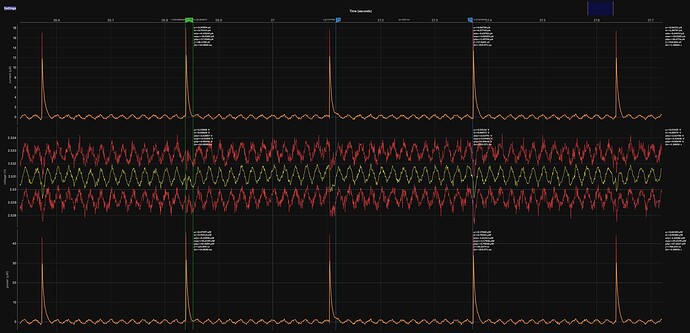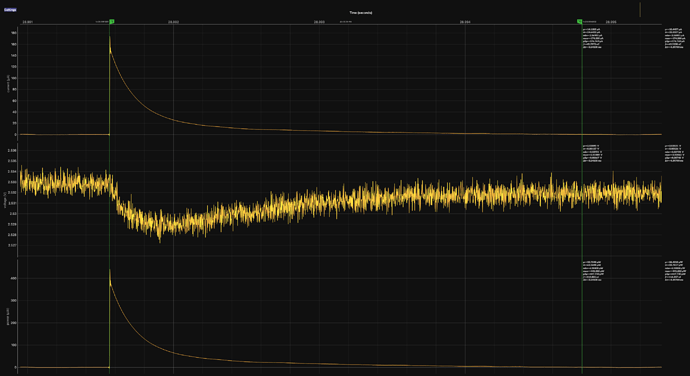Hi all,
I bought a JS220 a couple of weeks ago to measure the power consumption of a SoC.
Right now, I am interested in the power it consumes during deep sleep.
In the oscilloscope view I saw that my specific device in deep sleep only draws a very small current for most of the time with short peaks every ~275 ms (not quite sure yet what it does there).
So I started with a high (fixed) manual current range and lowered it to the lowest possible level to still capture the full height of the spikes. I ended up with the 18 mA range:
Cursors green: The peak only
Cursors blue: Between the peaks
What confuses me here is that the blue cursor measurement shows a negative average current, although the peaks show that the current should be flowing in “positive direction”.

According to the JS220 datasheet, the offset error in the 18 mA range can be +/-15µA which could explain the negative value when trying to measure the very low current between the peaks. But in an other test I shorted the current posts on the device, measured in the 18 mA range and the result was an average current of ~+400 nA.
I then changed to auto range with the following result:
Here it seems to choose the 18 µA range (no difference if I change to manual 18µ), with no switching to higher ranges during the spikes. This makes them appear factor 1000 longer than they probably are but at least the blue measurement shows a positive mean value now.
Any explanations and/or suggestions how to measure the (average) SoC’s deep sleep current accurately?
Best regards



